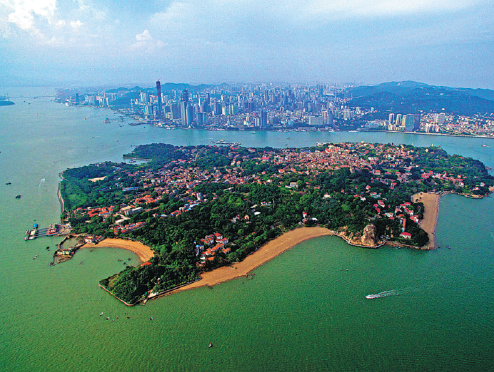A list of achievement
Inclusion of Quanzhou as a UNESCO World Heritage Site shows China's long, concerted efforts in cultural conservation, Wang Kaihao reports.
By Wang Kaihao | China Daily | Updated: 2021-07-29 09:35

And, the 7.8-kilometer Central Axis of Beijing, which is likely to be nominated by China for the same list within the next decade, is also a reflection of Chinese core values, ranging from urban design, ritual system and pursuit of the harmony between people and their environment, Lyu Zhou, director of Tsinghua University National Heritage Center, said at a side event on conservation and sustainable development of historic urban landscapes held at the ongoing 44th Session of the World Heritage Committee in Fuzhou, capital of Fujian province.
"The effort of seeking World Heritage status is just a channel to enhance the protection of old cities, which is a challenge commonly faced across the world in urban development," Lyu said.
"Many of our experiences, including comprehensive conservation of cultural heritage sites, the timely drafting of plans and people-centric ideas (in site protection), can be referential for the international community."
In China, there are about 70 local rules for the conservation of cultural heritage sites, and the central government has allocated over 600 million yuan ($93 million) for the protection of World Heritage sites since 2012.
Some Chinese experiences have been shared further afield. In 2018, the 42nd Session of the World Heritage Committee recommended conservation of the Grand Canal as an example. Last week, the Great Wall was cited as another example of conservation at the committee's ongoing session.
Some overseas experiences have also been introduced to China through joint efforts. In 2014, inscription of the "Silk Roads: The Routes Network of Chang'an-Tianshan Corridor" marked China's first, and, so far, only cross-border World Heritage Site, with Kazakhstan and Kyrgyzstan.
According to Song Xinchao, deputy director of the National Cultural Heritage Administration, a joint bid for ancient maritime Silk Road sites, combining China and some other countries, is still being planned despite the difficulties.
"To prepare for the work, we'll further enhance cooperation and coordination with countries along the routes and launch thematic research," he says. "We can protect and inherit these historical treasures together."
During a side event on the ancient maritime Silk Road at the 44th Session of the World Heritage Committee, experts from Japan, South Korea, Indonesia and India contributed their ideas on the joint protection and research of heritage sites in the network of ancient trade routes through livestreaming.
Starting from Quanzhou, an ancient harbor known for its cultural inclusiveness, the voyage of heritage conservators in China may have a more challenging but greater goal.
Hu Meidong contributed to this story.
























